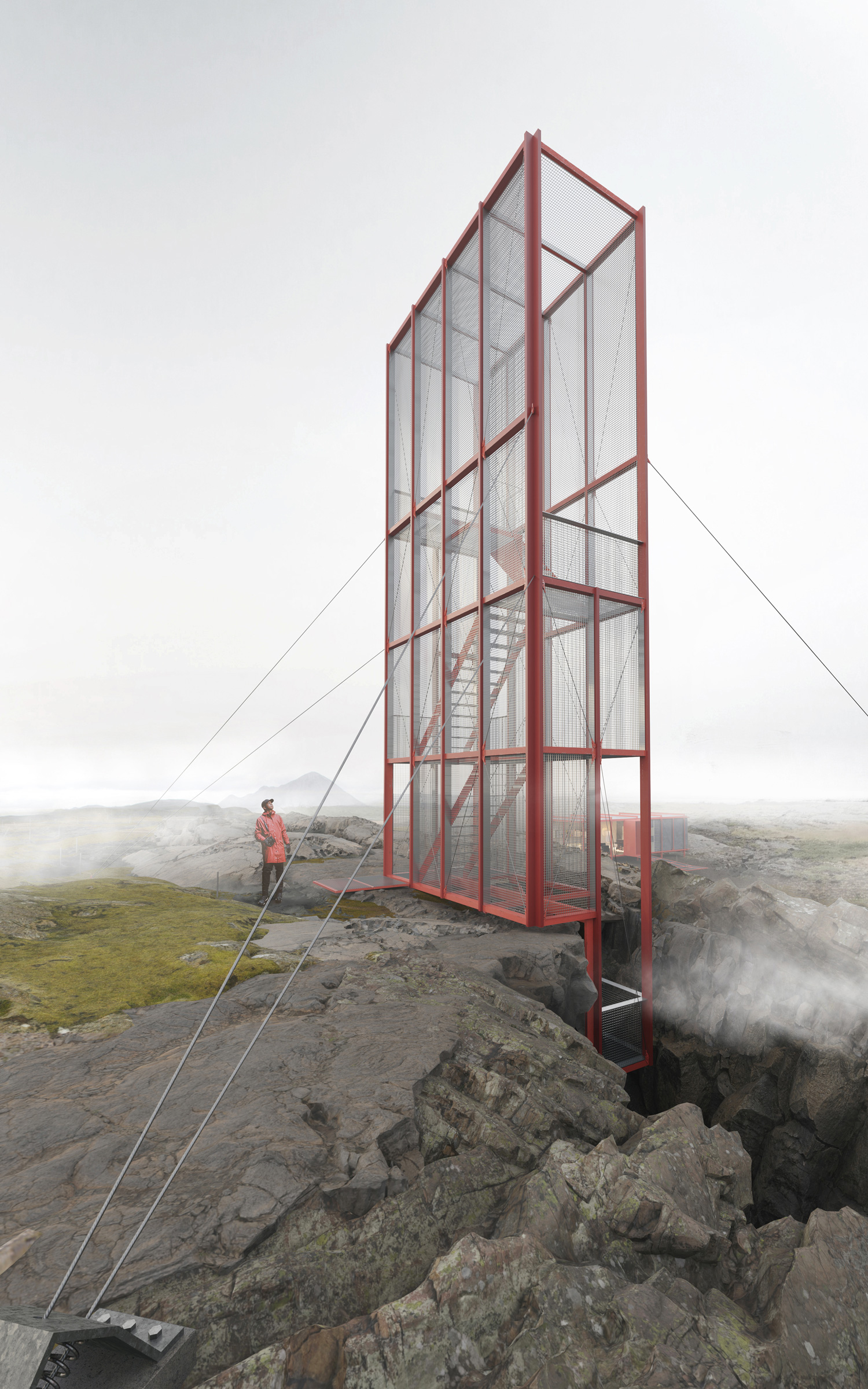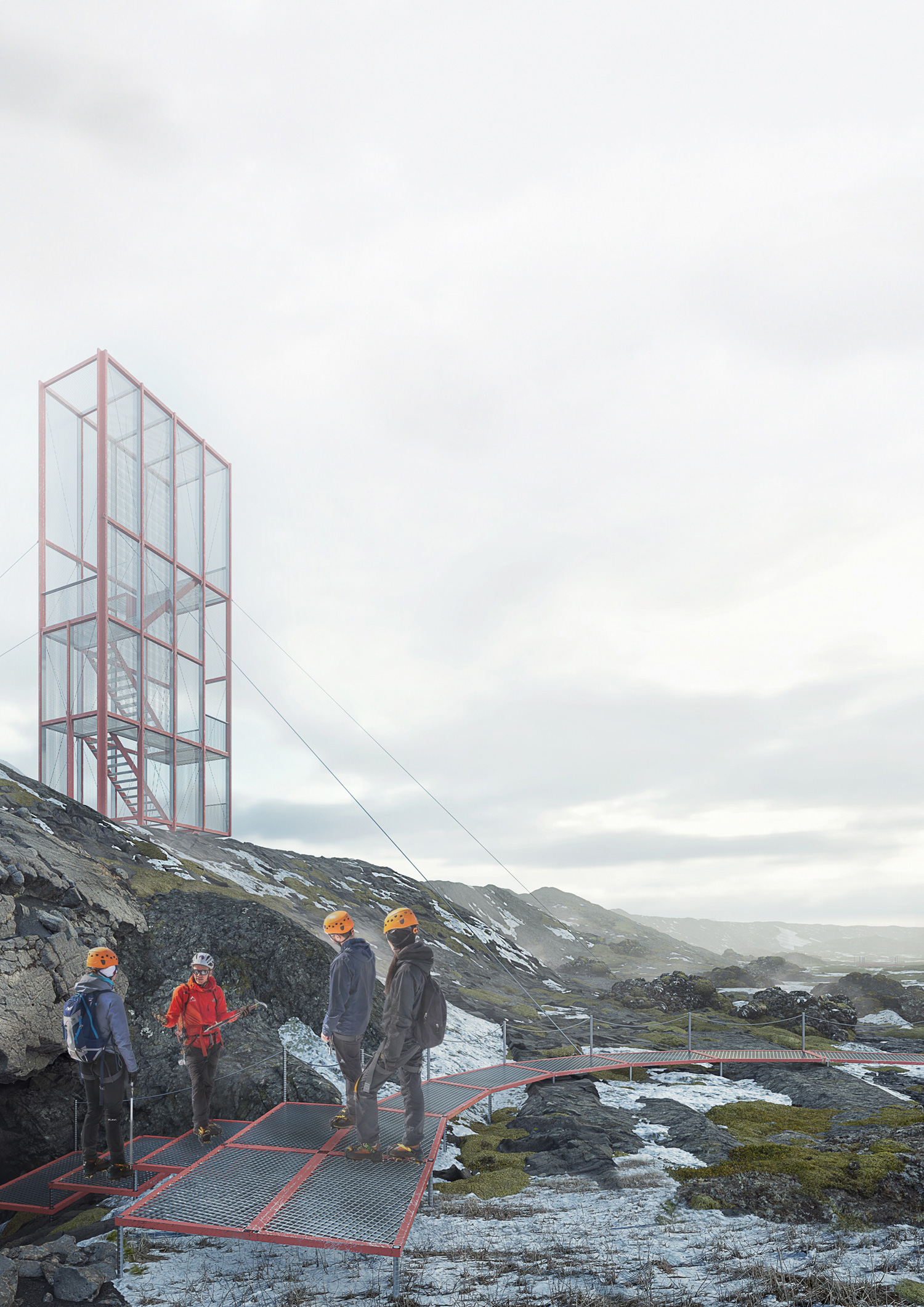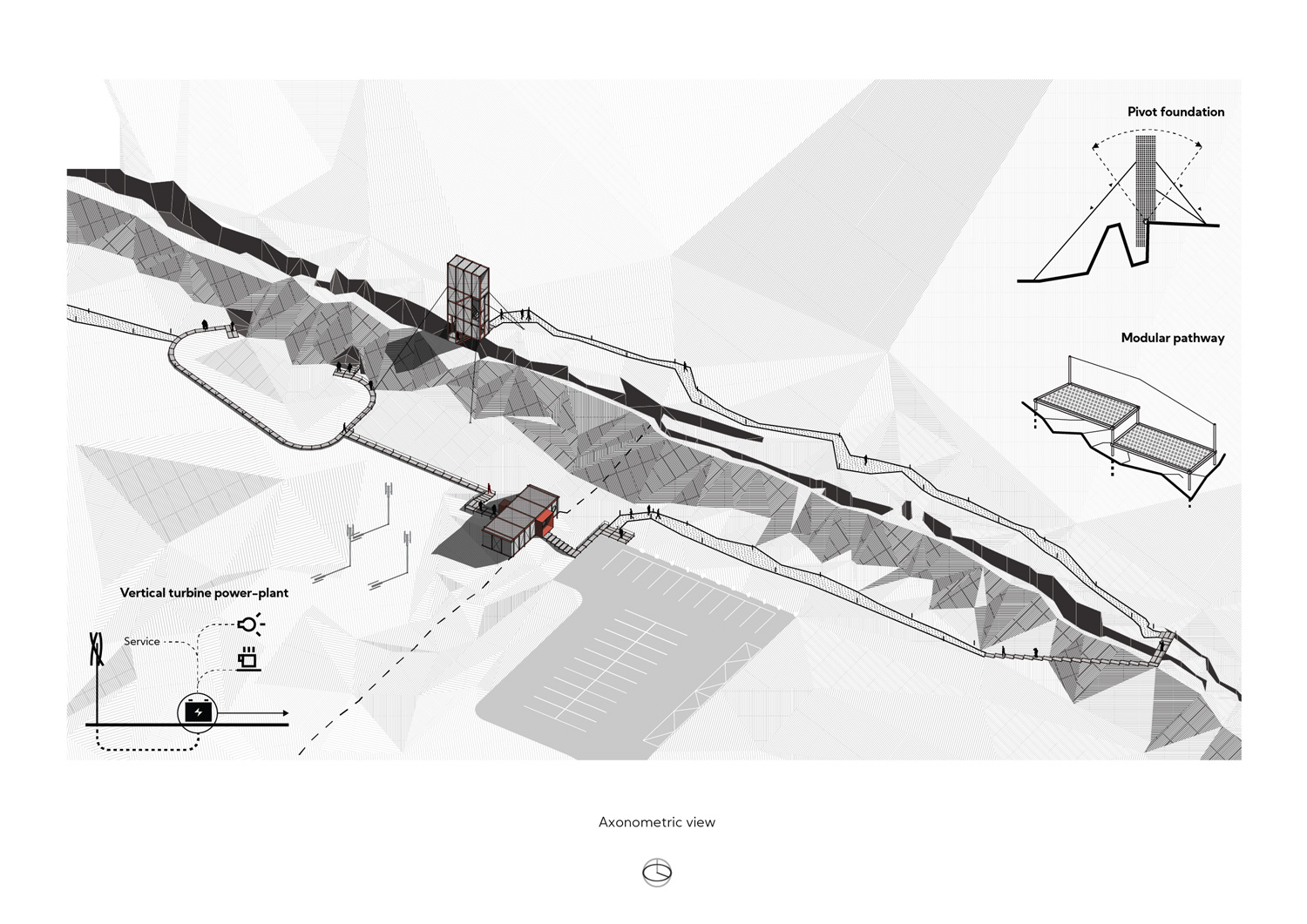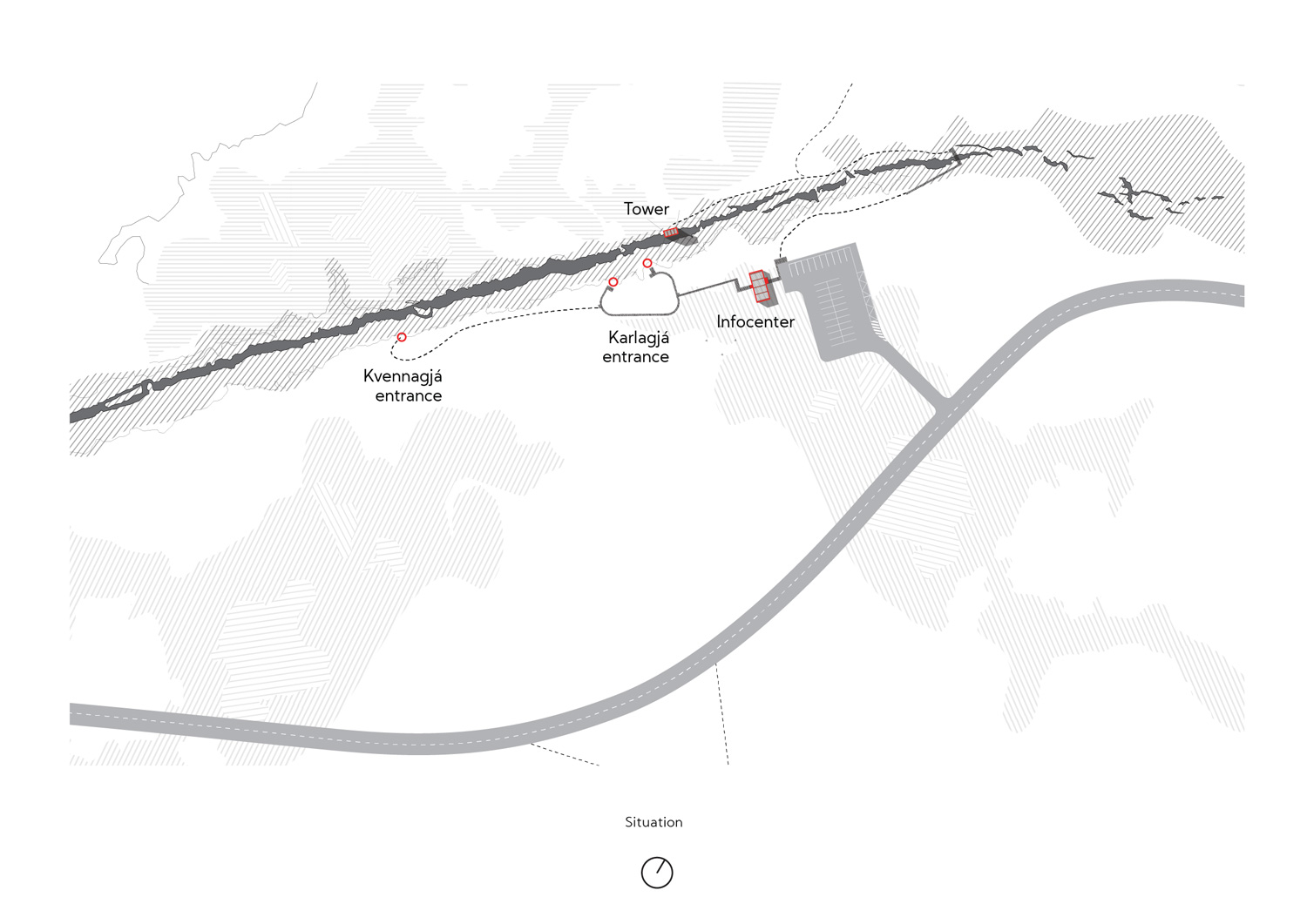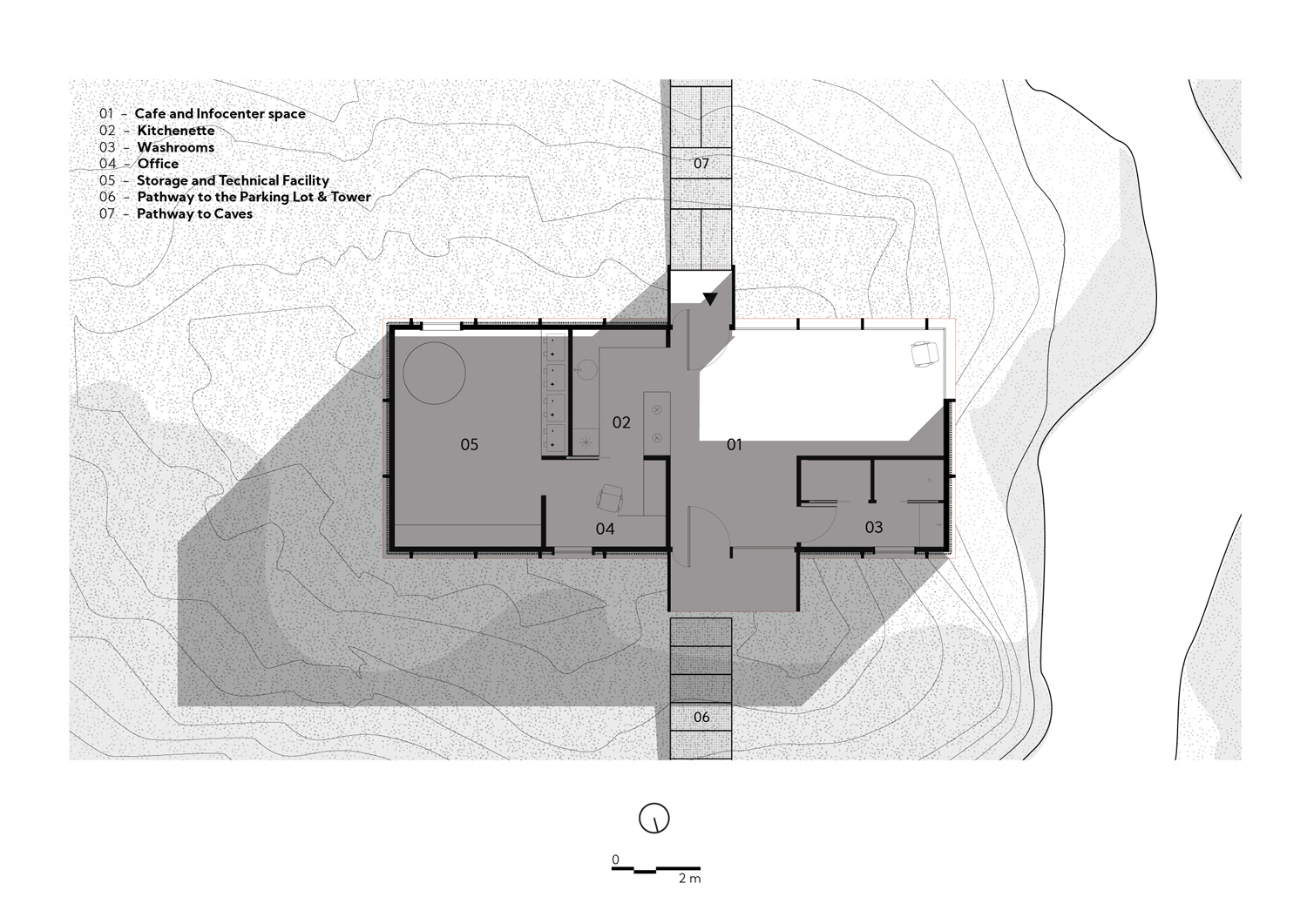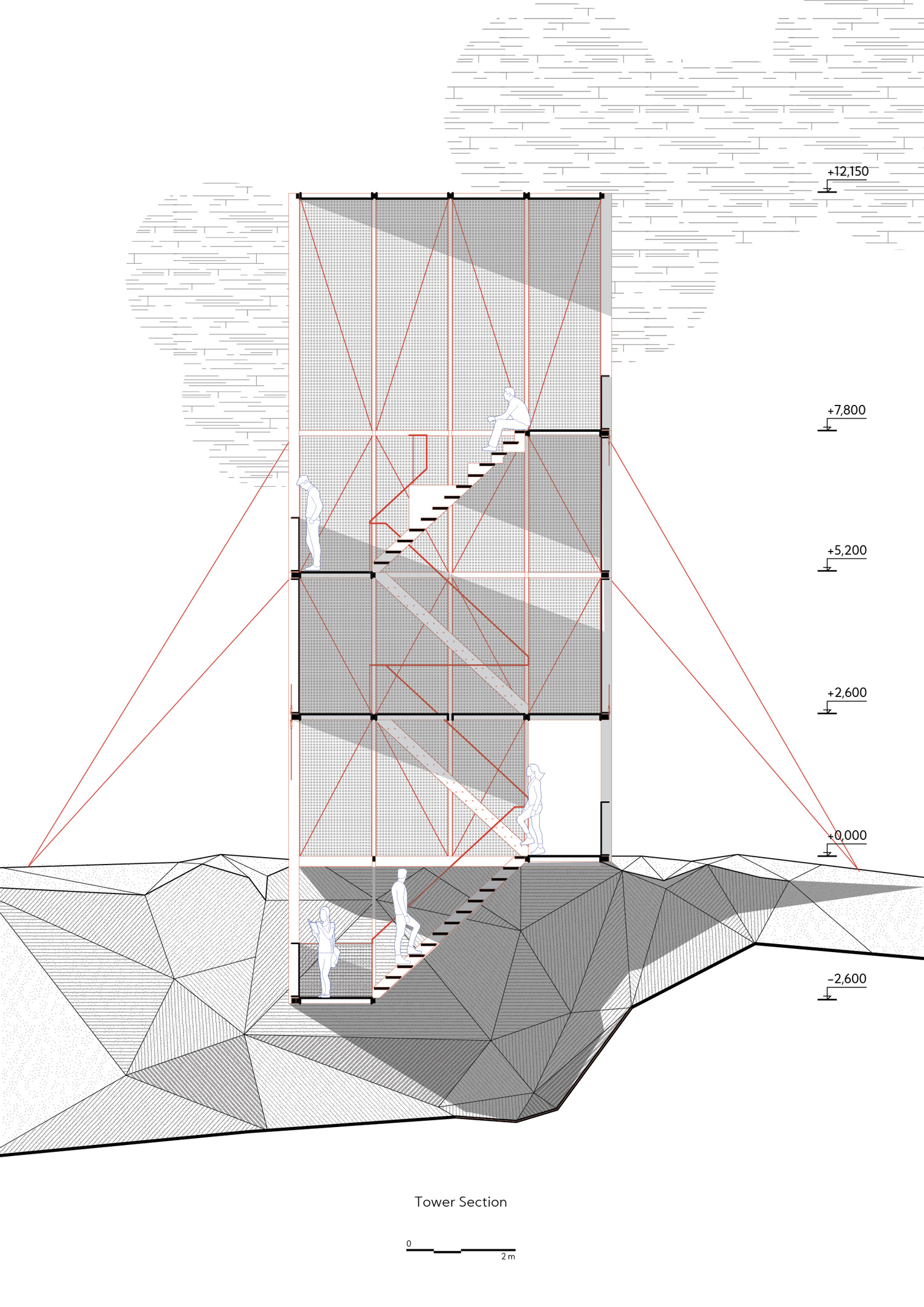2812-KOG-REK.IS-2020
Client: Unknown
Status: Competition (2020)
Location: Reykjavik, Iceland
Coordinates: 64.255729, -21.130648
Climate: Artic / polar, Cold
Material: Metal
Environments: Mountain, Riverside
Visualizer: Studio
Scale: Extrasmall
Types: Cabin, Microarchitecture
The journey and experience of Iceland is the inspiration for this narrative, of which nature is the central figure. The strategic placement of the new structures highlights the uniqueness of the location and provides visitors with augmented views on the land. The curated experience is designed as a series of ‘wow’ moments, as each phase of the journey presents diverse sights of the land.
The itinerary begins with a gathering refuge where visitors recharge, collect information on the area, and get ready for the tours. Cladded from the outside with modular insulating sandwich panels and a steel grating system, the volume is opened-up by a central glazing that invites visitors to its warm interior, where functions include a cafeteira, an information point with a library, washrooms, a small back-office, and a technical and storage space.
Visitors are then taken through a predefined path that leads either to the viewing tower or to the caves. In order to filter the amount of tourists normally walking over the crust, the free-of-entry route to the tower is designed as a deviation from the natural way along the rift, but still providing the full experience of a hike along, and over the canyon. Additionally, the physical experience of crossing the canyon brings awareness to the unique rift’s location in between the Eurasian and American continents. The pathway is built with a modular system designed as a combination of natural walkways and platforms routes. Using a metal frame and galvanized steel grating, the elevated platforms are weather resilient, easy to apply, and replace. For additional protection, the classic low ropes for defining the areas in case of high snow are used along the raised path.
Once reached the viewing tower, travellers are taken through a staircase leading both down one story into the fissure and up three stories to the viewing platforms. Openings into the main volume are made towards different viewing directions, in order to provide diverse experiences at each level. The underground balcony is fully surrounded by rocks, safely experiencing the feeling inside the fissure. The first and the highest platforms have views looking towards the mountain, while the middle level looks towards the rift in its whole length and to the Hverfjall volcano. At the highest slap, an in-between sitting platform allows visitors to rest while viewing the breathtaking land from above.
The monolithic design of the volume creates a contrast with the organic volumes of nature, therefore making the new object perceivable as a man-made form from a distance. The metal grid enveloping the vertical structure of the tower is perceived as a see-through object from afar, but once inside, it feels enclosed, allowing for a greater perception of the chosen views.
Overall, the design solution is considering both the experience from the visitors perspective, and the responsibility towards the land and the property, while also tackling the issue of the extreme conditions of the Icelandic weather. The latter is solved by using durable, affordable, and easily replaceable construction materials which can bear the hostile conditions. The decision on using the steel grating system was made for its durability and versatile application that cuts on transportation, making the construction more efficient, and more sustainable. The material is applied on various places such as the walking surface on the path to reduce ice slippering, on the facade of the infocenter for greater durability, and vertically on the tower to partially filter the wind while still allowing it to blow through and minimize the wind load. The grid’s inner structure also naturally increases the level of stability and stiffness of the tower.
The tangerine colour on the metal structure helps identify the new-built even in the harshest weather conditions, especially in the case of the walking pathways, which needs most visibility in the snowy months.
